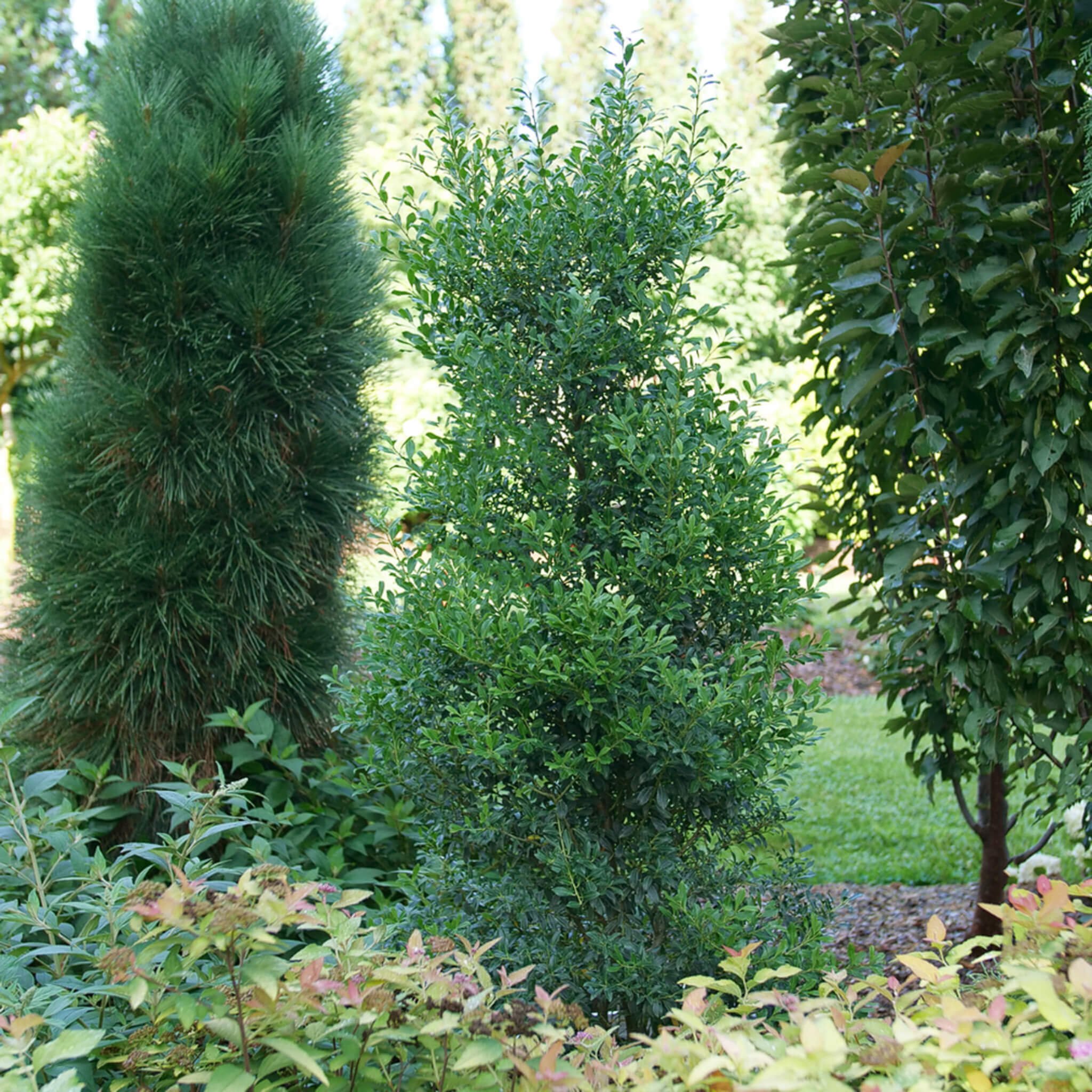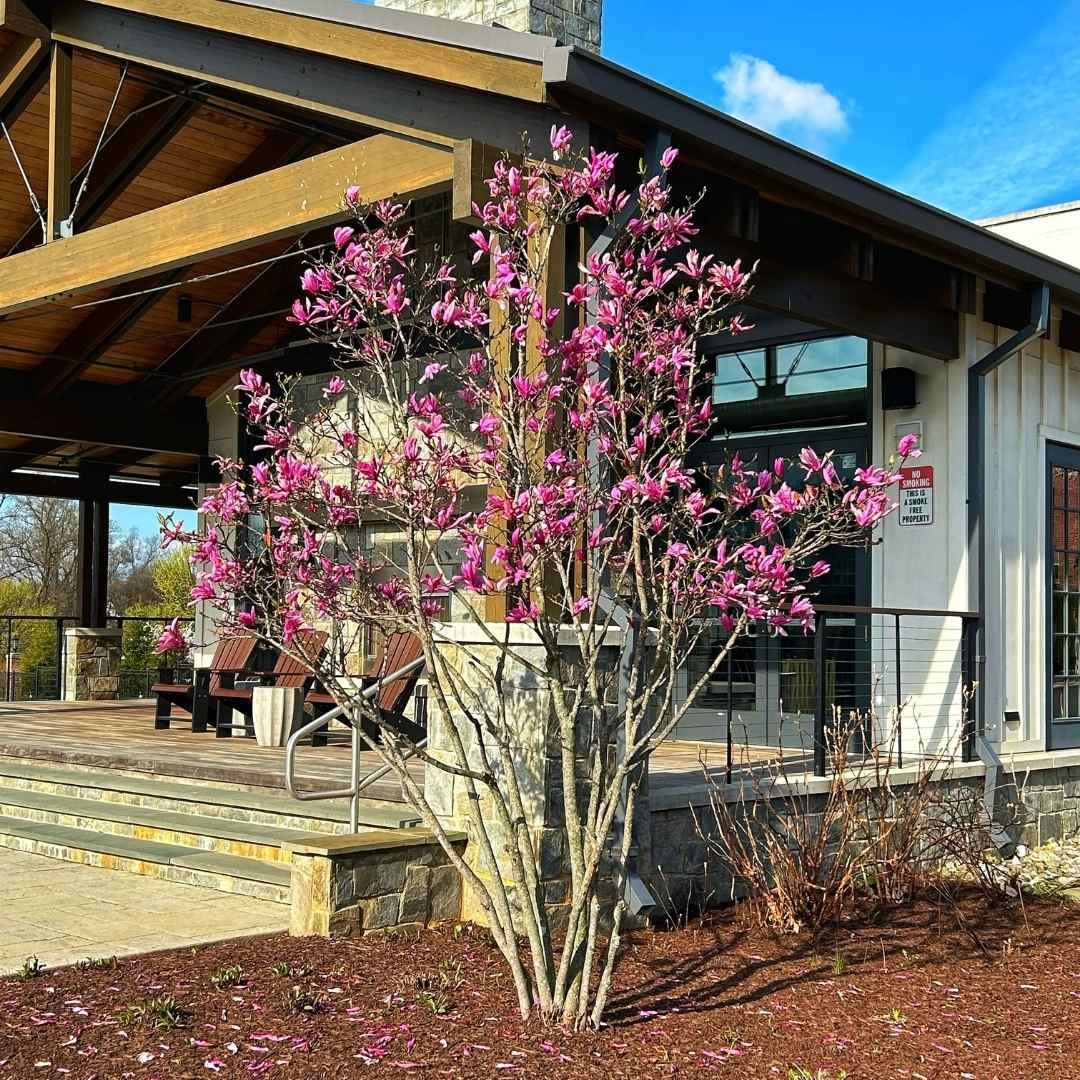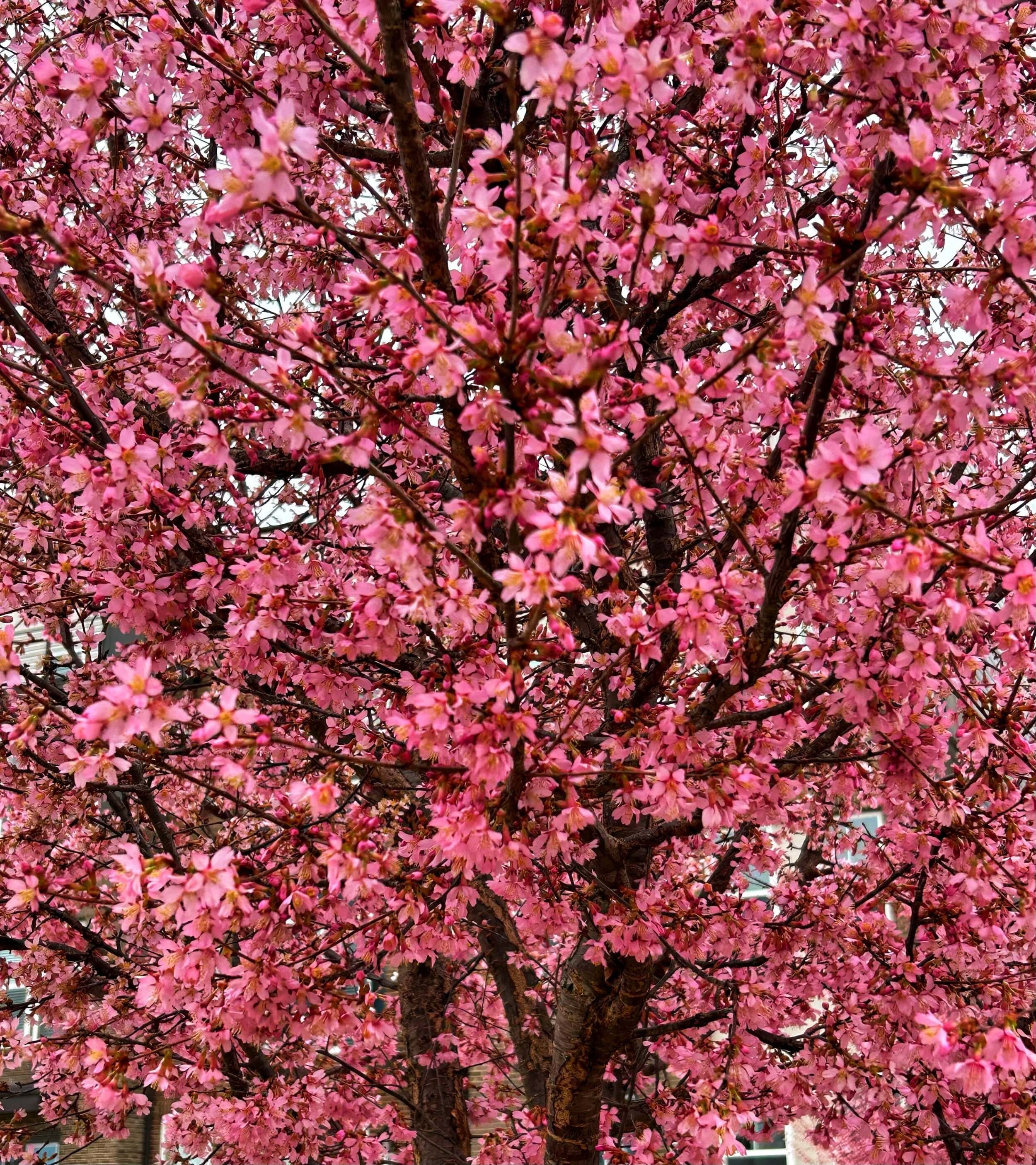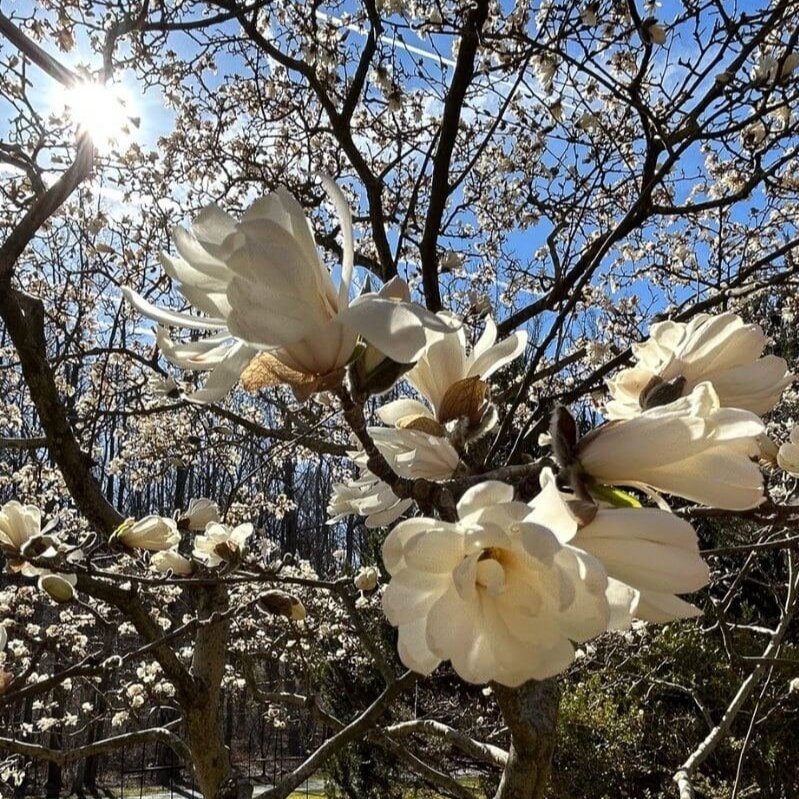Midnight Express® Delivers: A Redbud with Red Leaves
Cover image courtesy of Spring Meadow Nursery via National Gardening Bureau
Bring bold color to your yard with this redbud tree landscaping idea.
The Midnight Express redbud (Cercis canadensis 'RNI-RCC3') is a striking spring-flowering tree showcasing deep burgundy red foliage with green undertones.
It is a cultivar of the Eastern redbud, a graceful spring flowering tree native to North America.
Like other redbuds, Midnight Express® produces small, pea-shaped clusters of lavender purple flowers which appear on the branches before the tree leafs out.
These vibrant flowers attract bees, butterflies and other pollinators, making this stunning tree a great choice to plant near a pollinator garden.
After the flowers fade, Midnight Express® unfurls velvety red, heart-shaped leaves that bring a bold, dramatic beauty to the landscape.
As summer approaches, the deep red leaves develop green undertones, and in fall the inner leaves turn a rich butterscotch yellow, creating a stunning autumn display.
This redbud tree with red leaves is known for its adaptability and can thrive in a variety of soil types, including clay and alkaline soils.
It prefers full sun for best foliage color and grows in USDA zones 5 to 9. Not sure what zone you are in? Check the USDA’s Plant Hardiness Zone Map here.
Midnight Express® is a small to medium-sized tree, reaching a mature size of 20-30 feet high and 10-20 feet wide.
Its neatly rounded shape makes it an ideal focal point for the front of the house.
Help a newly planted redbud to establish a healthy and complex root system by providing regular, deep waterings for the first two years after planting Read our guide to tree watering here.
Handsome burgundy red leaves of the Midnight Express® Redbud tree. Image courtesy of Spring Meadow Nursery via National Gardening Bureau.
How to Grow the Midnight Express® Redbud Tree
Planting Location: Choose a spot with full sun and moist, well draining soil. This redbud tree with red leaves tolerates a wide range of soil types including alkaline and clay.
Watering: Keep the soil consistently moist, especially during the first two years after planting. Regular watering is essential for young trees, particularly during dry spells. Are you experiencing a drought? Check the U.S. Drought Monitor.
Mulching: Apply a 2-3 inch layer of mulch around the base of the tree. This helps to retain soil moisture, regulate soil temperatures, and prevent weeds. Make sure the mulch does not touch the base of the tree; avoid creating a “mulch volcano”.
Pruning: The Midnight Express® redbud tree will naturally grow into a beautiful, rounded shape that requires little pruning. Remove any dead or damaged branches as needed. If desired, prune and shape in spring immediately after flowering has finished. Trees can also be pruned in late winter while dormant, though this may reduce the amount of spring flowers.
Fertilizing: Redbuds do not require fertilizing but can benefit from an annual application of compost or leaf mold. Protect your investment and consider developing a routine of hiring an arborist that can expertly provide care and address potential issues promptly.
Pest and Disease Control: The Midnight Express® redbud is generally pest and disease resistant, but may occasionally suffer from problems such as canker or leaf spot. Proper siting and adequate soil moisture go a long way in helping to prevent issues from occurring.
The lavender pink buds of the Midnight Express® redbud tree emerge before the red leaves. Image courtesy of Spring Meadow Nursery, provenwinners.com.
Where to Plant The Midnight Express® Redbud Tree
Front of the House: The rounded shape, spring flowers and changing foliage make this redbud tree with red leaves a great choice for the front of the house.
Accent or Specimen Tree: Plant as a focal point in your garden or landscape where its spring flowers and vibrant, multi-colored foliage can be fully appreciated.
Patio Tree: Midnight Express® is a stunning patio tree that brings three seasons of interest with its ever-changing foliage. Springtime flowers and a naturally rounded shape bring an elegant, structured touch to the patio area.
Woodland’s Edge: Plant this redbud tree at the edge of a lawn that backs into woods, where it can help to soften the transition from open space to forest.
Fire Pit Planting: Midnight Express® is perfect for a fire pit area, offering gorgeous spring flowers just as fire pit season begins and vibrant fall color for cozy autumn nights.
Pollinator Garden: Use near a pollinator-friendly garden, where its early spring blooms will provide nectar for bees and other pollinators. Combine with other nectar-rich, small flowering trees, shrubs and perennials to create a continuous food source for pollinators throughout the growing season.
Street Tree: Midnight Express® is suitable for planting as a street tree in areas with at least 30 feet of clearance overhead.
Is The Midnight Express® Redbud Tree Messy?
Midnight Express® redbud trees do produce some natural debris, but are not considered to be particularly messy.
Each season, redbud trees produce seedpods which persist on the tree through autumn. Most are blown away by the wind or eaten by birds and squirrels.
A few volunteer seedlings may sprout and grow, and these can easily be pulled out or mown down before getting too big.
Like other deciduous trees, redbuds shed their leaves in the fall. During routine fall cleanups, gathering these leaves can be easily accomplished by using a rake or leaf blower.
The Midnight Express® redbud tree red leaves pop in the landscape. Image courtesy of Spring Meadow Nursery, provenwinners.com.
Is The Midnight Express® Redbud Tree Deer Resistant?
Midnight Express® redbud trees are not considered to be deer-resistant, and in fact, Rutgers University rates redbud trees as "occasionally severely damaged" by deer on their list of “Landscape Plants Rated by Deer Resistance”.
This means that deer will browse on redbuds, particularly young trees and tender shoots, which can lead to significant damage or even stunt the tree's growth. 😞
If you're planting in an area with a large deer population and would like to plant a spring blooming tree, choose something more deer-resistant like a serviceberry (Amelanchier species).
Serviceberries are small flowering trees with beautiful blooms and edible berries. They are less appealing to deer, making them a better choice for landscapes where deer pressure is a concern.























Create a Winter Wonderland with This Unique Small Tree